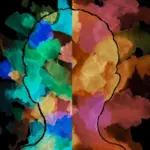
Self-esteem is a quite complex psychological element in which different mental processes are involved, which are also very complex.
However, despite how confusing the concept of self-esteem can be, it is possible to discern within it a series of elements and dimensions which make it easier for us to understand that this psychological construct is more than the sum of its parts.
Next Let’s discover what the main components of self-esteem are in addition to the dimensions that make it up.
What is self-esteem?
Self-esteem is a complex construct, in which several elements and dimensions are interconnected. To understand what such components are, we must first understand what self-esteem exactly is.
We can define self-esteem as the way in which people value themselves, taking as a reference what our ideal “I” should be If we consider that we are very close to such a “self”, our self-esteem will be high, while if it is very far from that supposed ideal, it is most likely that our self-esteem will be at rock bottom,
Self-esteem and self-concept are closely related. This second refers to the set of ideas and beliefs that make up our concept of “I”, the same ideas that influence our self-esteem. adding an emotional and moral burden Depending on how we see ourselves and whether we consider that vision positive or not, we will be more or less satisfied with who we believe we are.
Self-esteem can be seen as the consequence of different psychological processes, which can pose a threat or an opportunity to our psychological well-being. This same self-esteem can also be the cause of other psychological phenomena, with which we can say that self-esteem is both the cause and the effect of our emotional well-being, self-concept and adaptability to our environment.
We can understand this by thinking about a patient with major depression. Those who suffer from this disorder usually have very low self-esteem, made up of negative beliefs and feelings about how the patient sees themselves. A person who does not have a good opinion of himself will not dare to try new things, will be afraid to take risks and will not want to interact with other people because he sees himself as less valid than the rest of society. All of this can contribute to your isolation and worsening of the disorder.
It should also be said that Not all problems related to self-esteem are due to having it too low Having overly inflated self-esteem can also be a problem, something that occurs in some disorders such as bipolar disorder when one is in a manic phase or in certain personality disorders, such as narcissistic disorder.
One of the objectives of psychotherapy is to ensure that people know how to maintain a balanced self-esteem, well adjusted to reality. We all have our limitations, but we also have strengths that hold our true potential. Nobody is perfect, but neither is a complete failure. Whatever the patient’s view of themselves, psychotherapy helps people value themselves, see that they are capable of many things, and understand that everyone has weaknesses.
Taking all this into account, it is essential that all psychologists in their clinical practice know what the components of self-esteem are, in addition to several of its dimensions. We are going to see these in depth below.
The 4 main components of self-esteem
These are the four psychological components that are considered to give rise to self-esteem.
1. Perceptual processes
Every mental process is connected to the flow of information that reaches us through our senses Our internal world is the result of the stimuli we receive from our environment and, as part of that psychological world, we also have self-esteem.
It could be said that the raw material of this psychological phenomenon is perceptual processes, everything that our cells and sensory organs capture from the environment and that send the information to the brain in nervous signals.

2. Self-concept
Self-concept is the description of ourselves made up of ideas, thoughts and beliefs that we have stored in our minds It is a definition of our person, our concept of “I” with all its facets.
This component of self-esteem is made up of the combination between the sensory information that comes to us from the environment and the interpretation we make of it based on other thoughts, ideas and beliefs also present in the self-concept.
That is, it feeds back on itself, but taking as raw material new information that induces some changes in the way we see ourselves as time passes
3. Emotional burden
The emotional burden is the set of emotions associated with everything that goes through our heads In this case, we talk about all those emotions related to our idea of “I”.
It is these emotions that lead us to feel good or bad about who we believe we are and, at the same time, they can serve as motivation, making us adopt a certain position when faced with a challenge.
Likewise, it should be said that it is difficult to discern between emotional burden and self-concept when talking about self-esteem. This is because our emotions and our ideas about ourselves are phenomena that occur at the same time and interact with each other.
4. References
As the last component of self-esteem we have references. Each person’s self-esteem will always be built taking into account certain aspects of our sociocultural environment especially the closest social circles to which we are exposed.
Family, friends, classmates, and even TV celebrities influence our self-esteem, serving as models of what we want to be, in addition to valuing ourselves more positively or negatively depending on what is in our environment.
For example, if we are the least muscular guy in gym class, this will probably make us feel bad. On the other hand, if we are the smartest girl in our chess club, we probably rate ourselves very highly in this regard.
All the people we interact with and the way we believe they are better or worse than us influences ourselves and how we feel about those goals we achieve.
Added to this, From the interaction with other people we create the ideal image of our “I”, which may or may not coincide with what a person we know is like. It is a function of how close or how far we consider ourselves to be from that ideal “I” that will make our self-esteem higher or lower.
- You may be interested: “How to learn to accept yourself? 8 tips”
Dimensions of self-esteem
Although we have just seen the main components of self-esteem, there are those who prefer to talk about dimensions when talking about this psychological construct. In reality, these dimensions can be considered homologous to the components we just talked about, although they have some nuances that we will see below.
1. Cognitive dimension
The cognitive dimension has to do with everything that has to do with the person’s thoughts about themselves and the mental processes that give rise to them, also including self-image. It has to do with how the person sees themselves, ignoring the emotions they have about themselves It would correspond to the self-concept.
Here we would find ideas such as believing that one is not capable of achieving something, that one is not too intelligent or that one is above other people, to give just a few examples.
- Related article: “Cognitive psychology: definition, theories and main authors”
2. Affective dimension
The affective dimension would be related to the emotional load that we have seen in the previous classification As its name suggests, it is the dimension of purely emotional self-esteem and would encompass emotional reactions to the ideas one has about oneself: sadness, frustration, anger, joy, pride and satisfaction… any of the emotions that the person may feel. regarding its worth.
3. Behavioral dimension
Finally we have the behavioral dimension of self-esteem, which is the easiest of the three to identify in both a person with high and low self-esteem. This dimension is the result of the other two dimensions combined and manifested in the form of behavior
When you have low self-esteem, we have seen that this is the result of having negative thoughts about yourself that provoke negative emotions. As a result, the person will behave in a withdrawn, fearful or angry manner.
For example, we can see this with a person who wants to join the gym to see if they get in shape and improve their physique. Even though he knows that this way he will achieve more psychological well-being because he will look better, he is afraid that other users of the facilities will judge him or look at him with a bad face when he uses the machines and does it wrong. As a result of this, and even though he is encouraged to sign up, he prefers to limit himself to using the elliptical and little else, fearing that if he uses some complicated machine he will make a fool of himself.








